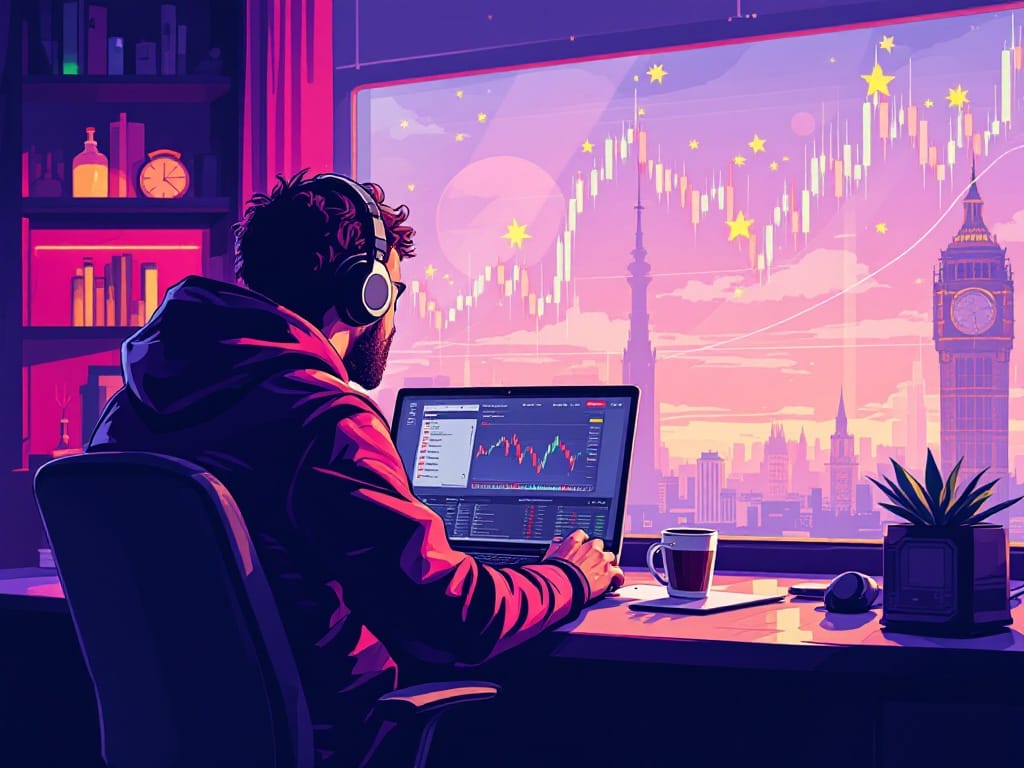How to Trade Futures After Hours Like a Pro

The fast-paced world of futures trading doesn’t sleep once the sun goes down. In fact, knowing how to trade futures after hours can unlock new opportunities for dedicated traders. Picture this: economic news hits overseas markets while U.S. markets are closed, or you spot sudden price spikes at midnight as liquidity dries up. These scenarios are common in extended hours, and understanding them is key to staying ahead. For anyone fascinated by the futures market, knowing both the regular and overnight trading times is crucial for smart decision making and risk management.
Why should traders care about futures trading after the bell? For one, it allows you to react quickly to global events before most of the market wakes up. This is especially important if you want to hedge positions or catch trends developing in other parts of the world. Many professional traders seek out the volatility and unique set-ups found during futures trading hours outside the regular session.
What Are Futures Market Hours?
Understanding futures market hours is the first step to effective trading, no matter when you prefer to trade. These trading hours determine your access to global commodities, indexes, and interest rates. While most new traders are familiar with the standard trading session, many are unaware that futures markets operate far beyond the typical Wall Street bell.
Regular vs. Extended Futures Trading Hours
The standard times—often called “pit hours”—used to closely mirror regular stock market hours. Now, electronic trading has made futures available far more often. For example, most U.S. futures contracts, including the popular E-mini S&P 500, trade nearly 24 hours a day, starting Sunday evening and ending Friday afternoon. There are short breaks for daily maintenance or settlement, but you’ll frequently see activity even in the middle of the night.
The Role of Global Markets in Futures Trading Times
Futures trading is inherently global. Contracts for crude oil, gold, stock indices, and currencies are traded by participants across continents. This means that market-moving news might occur during “off” hours in the U.S., yet instantly impact prices worldwide. For instance, overnight statements from the Bank of Japan or a major OPEC announcement can significantly affect U.S. futures prices well before the NYSE opens. That’s why understanding the broader futures trading times is vital for anyone aiming to stay ahead.
Commodity exchanges, such as the CME Group, ICE, and Eurex, set the schedule for their product listings reflecting this global nature. Not all contracts are active or liquid at all hours, but many remain open. For example, the CME’s Globex platform allows for nearly continuous trading on contracts from metals to agricultural products.
What Time Futures Stop Trading
So, what time do futures stop trading? The answer depends on the specific contract and exchange. While many popular contracts are open 23-plus hours per day, they have a “settlement” or closing hour each afternoon, commonly 4:00 pm Central Time for U.S. stocks. However, a brief daily halt (often one hour in the late afternoon) is built in for settlement processing and system maintenance..
If you’re seeking additional guidance, read up on specific rules that can impact your trading times as well.

What Does “After Hours” Really Mean?
Most traders associate after hours with stock market activity that happens outside regular 9:30 am to 4:00 pm EST sessions. But what does after hours trading mean for futures markets? This period goes by many names: post market trading, overnight trading, or extended hours trading. Each label describes times when major exchanges aren’t actively running their main sessions—yet markets keep moving.
The Meaning of After Hours in Futures Trading
For futures, after hours refers to any period outside the main day session specified by the exchange. Technically, due to the nearly 24-hour structure of modern futures markets, the only true “close” is at week’s end (usually Friday afternoon until Sunday evening). Therefore, after hours in futures generally means trading during low-volume, high-volatility windows like late evening or early morning U.S. time.
How Does After Hours Trading Work Across Different Contracts?
How does after hours trading work in practice? During these times, electronic trading systems match buyers and sellers directly. Your broker platform will route orders to the relevant electronic market, like CME Globex or ICE’s electronic system. You may notice wider spreads (difference between bid and ask prices) and fewer active traders. This is important because it can result in more volatile moves or slower fills compared to active market hours. If you need to know the specifics of available products and hours, consult a resource like this trusted guide to futures exchanges.
When Does After Hours Trading End Compared to the Stock Market?
A common question is: when does after hours trading end? In the stock market, extended trading usually stops at 8:00 pm EST. However, futures after hours trading doesn’t follow these strict boundaries. Most futures resume nearly round the clock, only halting for brief scheduled breaks. For major U.S. stock index futures, trading resumes each weekday at 6:00 pm EST, pauses daily at 5:00 pm EST, and fully ceases only on Friday night, restarting on Sunday evening.
Why Trade Futures After Hours?
Why would a trader choose overnight trading or extended hours trading when volumes are lower and risks can rise? The short answer is: greater access, powerful flexibility, and more potential opportunities. Let’s break down why trading during non-standard hours has become an important edge for those who know how to use it wisely.
Benefits of Overnight Trading for Active Traders
For active traders, after hours futures trading offers the chance to respond to economic data released after regular market close. For example, key policy statements by central banks, election results overseas, or company earnings from Asia and Europe often occur outside the U.S. day session.
Hedging Flexibility in Post Market Trading
Futures markets are crucial for hedging against risk, not just speculation. During overnight trading, commodity producers, importers, exporters, and investors manage exposure to changing economic conditions worldwide. For instance, a multinational business with exposure to Asian currencies may hedge risk reactively during Asian trading hours, long after Wall Street closes.
This flexibility extends to institutional money, agricultural businesses, and professional speculators. With nearly uninterrupted access, these market participants can make portfolio adjustments whenever global economies move, rather than being bound by local trading hours. If you’d like to know more about the professional background of experienced traders, here’s a page about the people behind the industry.
Spotting Opportunities in Extended Hours Trading Sessions
The unique rhythm of after-hours market trading brings both challenge and opportunity. Lower volumes mean price can move rapidly in response to even small orders or news releases. Skillful traders use tailored futures trading strategies to exploit these quick swings. Day traders might look for price spikes or overreactions to news coming from other continents.
For example, if a surprise rate change is announced by the European Central Bank at 2:45 am EST, futures traders are often in the best position to quickly enter positions and capture that volatility. If you want help understanding the psychology behind these sudden price changes and how to maintain your trading edge, reputable resources like The Balance’s trading psychology guide can help.
How to Trade Futures After Hours
Becoming skilled at how to trade futures after hours starts with preparation. Low-volume sessions demand altered strategies and risk management compared to daytime trading. Here’s how you can navigate the after-hours market like a pro.
Simple Approaches for How to Trade Futures in Low-Volume Sessions
When markets are quiet, complex strategies that rely on heavy order flow aren’t your best bet. Instead, focus on defined levels, such as previous support and resistance, and use clear stop loss orders. Range trading, anticipating prices will bounce between established highs and lows, is often effective in overnight trading where price tends to move within tighter bands before the next session begins.
Scalping, or taking very small profits over short moves, can also be appropriate if there is enough liquidity. The key is to avoid “chasing” trades. With lower participation, moves can be less predictable, and slippage is more likely.
Tools and Platforms You Need for After Hours Market Trading
Choosing the right trading platform is vital when trading outside regular hours. Not all brokers offer the same access to after hours trading times or the variety of contracts you may want to trade. When deciding how to trade after hours, make sure your broker supports direct access to major electronic futures exchanges, along with real-time quotes and robust risk management tools.
Mobile trading apps, advanced charting packages, and even plugins that alert you to breaking news can all help you react quickly during low-volume windows. Make sure to research platforms that specialize in futures and feature overnight access, low spreads, and strong customer support.
How to Trade After Hours While Protecting Your Account
Risk management matters more than ever when you’re learning how to trade after hours. Lower liquidity means prices may gap suddenly, and there are fewer counterparties to absorb your trades. Always use stop losses and be wary of oversized positions. Consider trading smaller sizes during extended hours to avoid unexpected volatility.
Risks of After Hours Market Trading
Trading during extended hours is not for everyone. Risks can be amplified due to low liquidity, wide spreads, and unpredictable news events. It’s essential to understand these challenges if you want your after hours trading journey to succeed.
Thin Liquidity and Price Jumps
After hours futures markets are often characterized by thinner order books. This means that compared to regular trading hours, there are fewer buyers and sellers actively participating. The result is that large orders can have a bigger impact, sending prices up or down rapidly. A seemingly small news update during a quiet period can spark a significant move, catching unprepared traders off guard.
How to Manage Spreads During Overnight Trading
Spreads—the gap between the bid and ask prices—tend to widen once volume drops. If you’re trading at a time when few participants are active, you might notice that order fills come at less favorable prices, costing precious points. Skillful traders address this by using limit orders instead of market orders, ensuring they enter or exit at desired prices, not simply “the next available.”


Why Discipline Matters More in Post Market Trading
The sometimes erratic nature of after hours trading can tempt even skilled traders to take unnecessary risks. Sticking to a disciplined plan becomes more important than ever. This means defining risk per trade, pre-setting stop losses, and avoiding impulsive decisions when news unexpectedly moves the market.
Futures Trading Strategies That Work After Hours
Not all trading approaches are suitable for thin overnight markets. The best after hours trades are often those that account for unique overnight risks and leverage lower volatility with consistent, simple strategies.
Range Trading Setups in Quiet Markets
Markets frequently settle into narrow trading ranges during after hours sessions. Here, range trading, identifying support and resistance and trading within those levels- can provide consistent opportunities. Set well-defined entry and exit points, and keep stops tight in case a breakout occurs on unexpected news.
News-Driven Overnight Trading Opportunities
Volatility can explode when global news is released during U.S. nighttime hours. Traders who follow economic calendars or news feeds can position ahead of or in reaction to these events. For instance, knowing when Japanese GDP numbers are released, or following geopolitical updates from the Middle East, can help you anticipate price surges.
Swing Setups Built for Extended Hours Trading
Swing trading is about holding positions for several hours to days, an ideal approach for markets that trend overnight. Watching for continuation patterns or reversal signals in after hours activity can set you up for profits once the main session resumes.
Final Words on Trading Futures After Hours
The unique landscape of futures trading hours unlocks chances that simply aren’t available in strictly daytime sessions. By understanding when markets open and close, what extended hours really mean, and the risks involved, you can craft a strategy that works whatever the clock shows.
Are you prepared to thrive, day or night? Put what you’ve learned to the test by choosing a firm that puts traders first with robust support for extended sessions. The after hours futures market is always waiting for the next skilled trader to rise.





